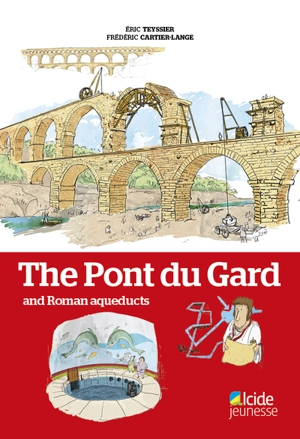
The pont du Gard : and Roman aqueducts
Eric Teyssier
Versailles, Lyon 2ᵉ, Lyon 6ᵉ...
Ce que dit l'éditeur
The Pont du Gard Aqueducts may well be the most significant works of Roman civilisation. Every city wanted to have abundant water for its fountains, and for the baths that the Romans particularly appreciated. Rome had up to eleven aqueducts ! The Nîmes aqueduct, built in the first century AD, is about 50 kilometres long with a slope of 12 metres... amounting to just 25 centimeters per kilometre. The ingenuity and skill of Roman surveyors and architects did not end there. To cross the gorges of the River Gardon, they had to build the Pont du Gard. How did they achieve this ? How many labourers worked on this construction site ? How has this work managed to survive for centuries ? When did it acquire its name ? |
RésuméUne introduction aux aqueducs romains, à leurs aspects techniques et à leur développement dans l'Empire romain. Une partie importante de l'ouvrage est consacrée à l'aqueduc de Nîmes et au pont du Gard. ©Electre 2024 |
Caractéristiques Auteur(s) Éditeur(s) Date de parution
5 juillet 2024
Collection(s)
Jeunesse
Rayon
Documentaires - 9-12 ans
Contributeur(s) Frédéric Cartier-Lange
(Illustrateur), Tess Campbell
(Traducteur) EAN
9782375911020
Nombre de pages
79
pages
Reliure
Broché
Dimensions
25.0
cm x
17.0
cm x
1.3
cm
Poids
324
g
|
 À propos de l'auteurEric Teyssier est un cas original parmi les historiens. Ce maître de conférence à l'université de Nîmes a changé de période de spécialité après sa thèse. D'abord contemporanéiste, avec une thèse sur la Révolution française, il a découvert l'archéologie de plongée qui l'a fait se tourner vers l'histoire romaine pour sa thèse d'habilitation. |

















